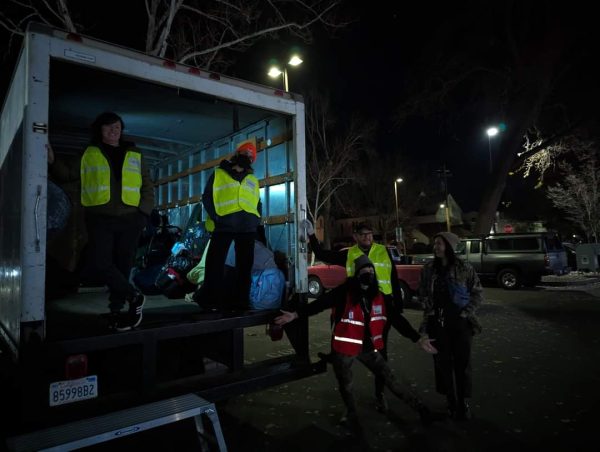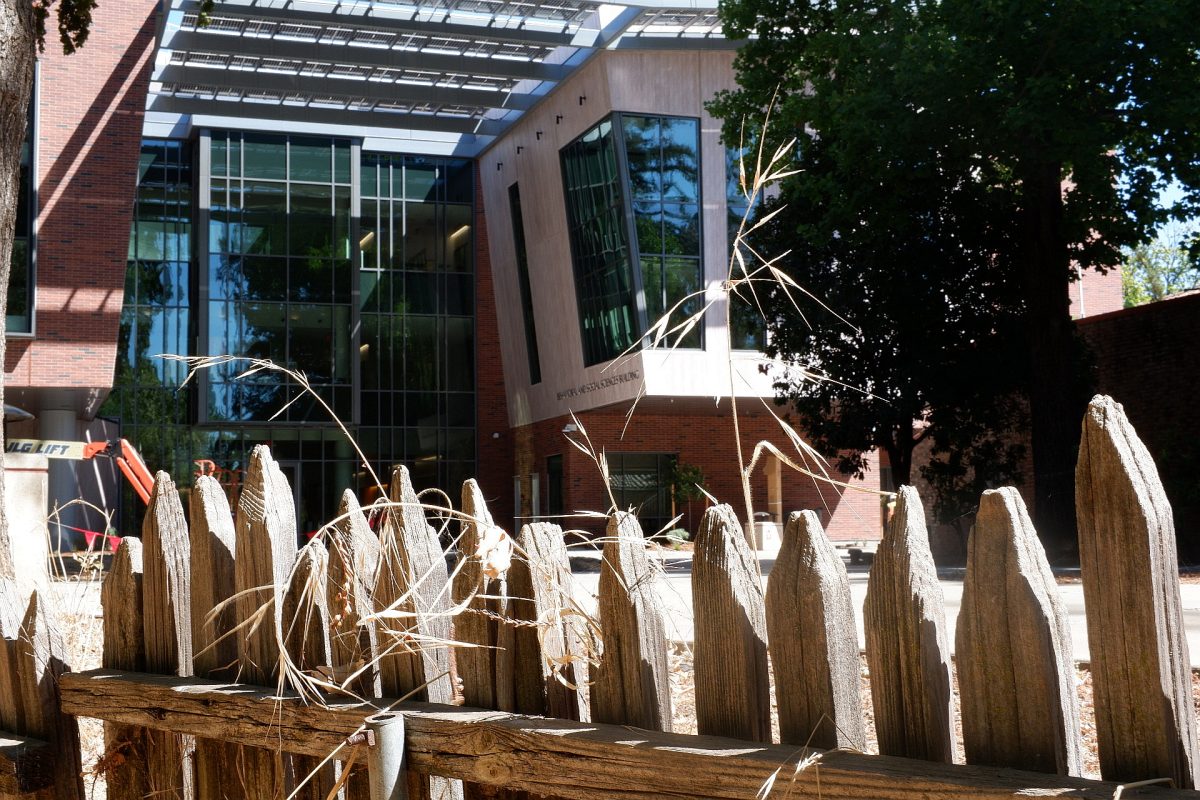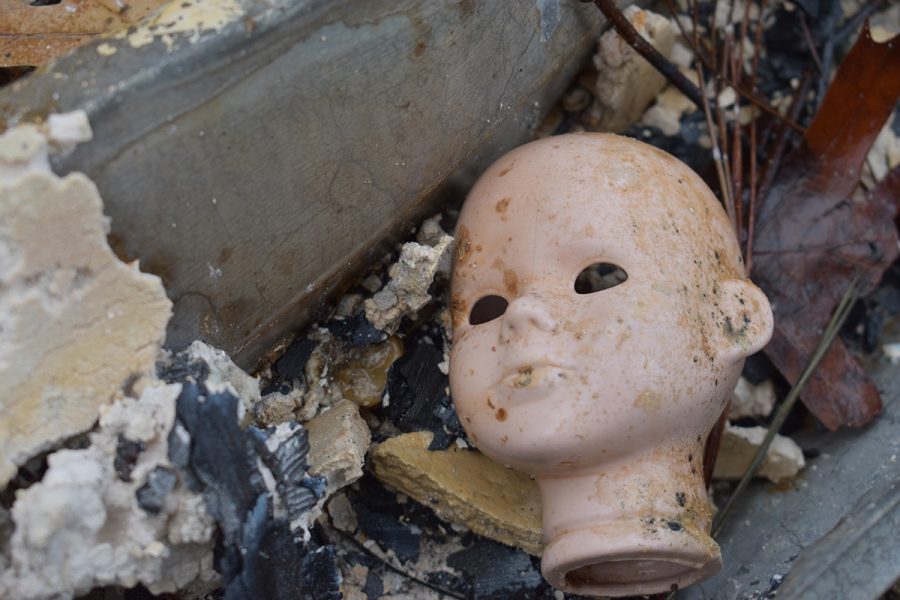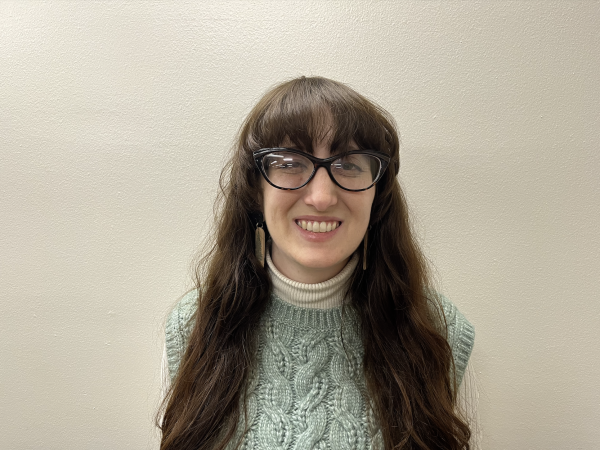When executive director Hilary Crosby evaluates the work Safe Space, an organization providing resources and shelter to the unhoused community, has provided over the past decade, one of the things she notes is the way the work has shown common ground among Chico residents.
Nobody, Crosby said, wants to see homelessness or people suffering on the streets. In Chico, aid for the unhoused is an undeniable need. The Butte County Continuum of Care 2023 Point-In-Time Executive Summary reported over 900 homeless individuals in Chico.
Reaching a satisfactory end result is where Crosby said differences and debates arise in the community. But she sees one of the goals of Safe Space as bridging and tackling that gap, while continuing to help people in the best ways they can.
Safe Space’s winter season recently wrapped up, marking a decade of work providing shelter to those in need.
A celebration of 10 years of hard work
In celebration of the work of the past 10 years, and the end of another season, Safe Space is hosting an “Alice in Wonderland” inspired “Unbirthday Brunch” at the Chico Women’s Club on April 6 from 11 a.m. to 2 p.m.

“One of the things I would love to do is establish some kind of annual fundraiser for Safe Space,” Crosby said.
The brunch could be the first step in establishing a consistent fundraising event.
Attendees can purchase tickets for the event, which will include breakfast from local businesses, cocktails and mocktails, and a prize raffle. Costumes — befitting the Wonderland theme — are also encouraged.
The whimsical bash is not only a fundraiser but also, according to Crosby, “a way for us to acknowledge all the hard work that goes into Safe Space, giving people a way to celebrate.”
In 2013, people who Crosby described as, “a group of individuals in town who were just really frustrated with the lack of sheltering and lack of ability to get people indoors” opened up the Chico Peace & Justice Center to provide temporary shelter for the unhoused. Those people became the founding members of Safe Space, which was closely tied to the Chico Housing Action Team in its early years.
Over time, CHAT became more focused on permanent housing, while Safe Space continues to provide temporary, emergency shelter through their winter shelter and summer cooling programs.
“Ten years of keeping people from dying outdoors in the winter,” was how Crosby summed up the organization’s history.
About Safe Space
Until Crosby joined Safe Space in an administrative role about two years ago, she said the organization had been completely volunteer-based.
“It’s really hard to operate on a strictly volunteer base,” Crosby said.
Safe Space still relies upon a much-appreciated volunteer base, but with administrative roles, the organization has been able to explore further funding, as well as networking and community engagement.
One of Crosby’s goals has been exploring more sustainable funding options, using community donations as well as grants to expand and diversify. In addition to enabling more programs, Crosby sees another strength in diversified funding.
“If someone is providing all of your funding they have a lot of say in how you do and what you do,” Crosby said.
Staying true to Safe Space’s mission requires a certain level of autonomy.
One of Safe Space’s main focuses is keeping the barrier of entry as low as possible, and getting people into shelter as quickly as possible. More recently, they’ve also been incorporating case management into their work, as a way to provide continued care to the community and connect people with further resources.
“We’re able to serve a lot of people and that is really unique to our program,” Crosby said.
She said over the past season, Safe Space helped over 200 individuals through the winter shelter program.
Crosby said about 60% of the people Safe Space serves are disabled, and often they have unique needs that prevent them from finding shelter elsewhere. Sometimes they don’t show up as their best selves, Crosby said.
“They all come with a story and a ‘why,’” Crosby said, explaining every person has a history and trauma.
Some of the questions Crosby asks regarding Safe Space’s care for these individuals are: “How do we be the best for them? How do we keep coming back for them?”
The value of volunteers and community partners
The primary way Safe Space continues providing care is through their volunteer and community base.
Crosby said they use over 300 volunteers each season and thousands of hours of volunteer work each year.
Many of the volunteer shifts are about two hours and cover a variety of opportunities. Those interested in helping don’t need to have any specific training. They can sign up online and show up to help at either the winter shelter or the summer cooling stations.

Crosby said it is a good way for students to get out and not only feel good about being able to help, but also to learn firsthand about issues like public policy, social services, housing and homelessness.
“You see the impact of all those things right in front of your face,” Crosby said.
She said volunteers get to hear the stories of the people the shelter provides care for.
“They’re our neighbors too,” Crosby said, adding that volunteering was, “a good way to get to know your community.”
Another part of the community that has shown up to assist Safe Space is the local faith-based community, in a way Crosby described as unique.
She said Safe Space volunteers and workers have found common ground with churches in trying to answer the question, “What are we going to do to get people taken care of?”
Churches have opened their gyms and fellowship halls to provide shelter in conjunction with Safe Space.
Crosby said they asked, “Well our ministry is to provide to people in need. How do we help?”
Safe Space has maintained partnerships with different providers who are happy to help, in what Crosby described as “a natural alignment.”
The organization has benefitted from having the faith-based community embrace their work.
“A big challenge of our program is that we don’t have a building,” Crosby said. “We are very dependent upon using other people’s space.”
Challenges and new opportunities
Safe Space faced challenges this past season finding intake centers for the winter shelter, in the form of code violations and zoning issues with the city. They moved around frequently through the winter. This month, they recently became even more unmoored, after their office lease was not renewed.
In looking for a new office, Crosby mentioned accessibility as a priority.
They will need a space case managers can work from and where their clients can safely come and go.
Safe Space currently has about 45 people on their caseload for case management, and workers need to touch base with them regularly to assist with housing applications, social security setup, medical appointments and more.
Crosby said these clients sometimes come on bikes or bring all their belongings with them, so space and safety are very important.
Ideally, the building would also be able to function as a summer cooling center.
At the moment, Crosby said it is very labor-intensive to constantly be moving the operation.
“It is quite the logistical operation to move around every week or two weeks!” she said.
One of the challenges Safe Space faces not only in finding a new office, but also with their winter shelter and cooling operations, is NIMBY-ism — a “not in my backyard” mentality.
“We hear a lot, ‘We love what Safe Space does but …’” Crosby said.
She said that can be hard to combat, and it is difficult to tackle the idea that people like what the organization does, but don’t want it near them.
In searching for a new building, Crosby said Safe Space is considering the general public’s perception while also thinking of the population the organization serves.
While she realizes that they can’t make everyone happy, Crosby said, “We want to be mindful of how it impacts others.”
Finding office space is a pressing concern for Safe Space in the immediate future, but looking forward, Crosby sees even further ways to expand their services.
Looking to the next decade of care, Crosby said one of the big needs is being able to connect people with “recuperative care and … respite care,” like home health, antibiotics and wound care.
These are things that are needed after someone is discharged from the hospital for immediate care, and they are vital for continued health.
“There are no hospice programs for people who are homeless,” Crosby said. “You are just discharged to the street with no end-of-life care.”
Another way Safe Space could grow is through providing sobering beds, which would allow people to avoid being jailed or hospitalized.
While looking toward these goals, Crosby also said that continually adjusting goals and adapting to needs is key.
She said one of Safe Space’s biggest assets has been its adaptability, referencing a time an emergency shelter was needed due to flooding, and the organization was able to get it set up in less than 24 hours. Crosby thought the turnaround time was around six hours.
“We definitely want to remain flexible and adaptable,” she said.
Heather Taylor can be reached at [email protected].











